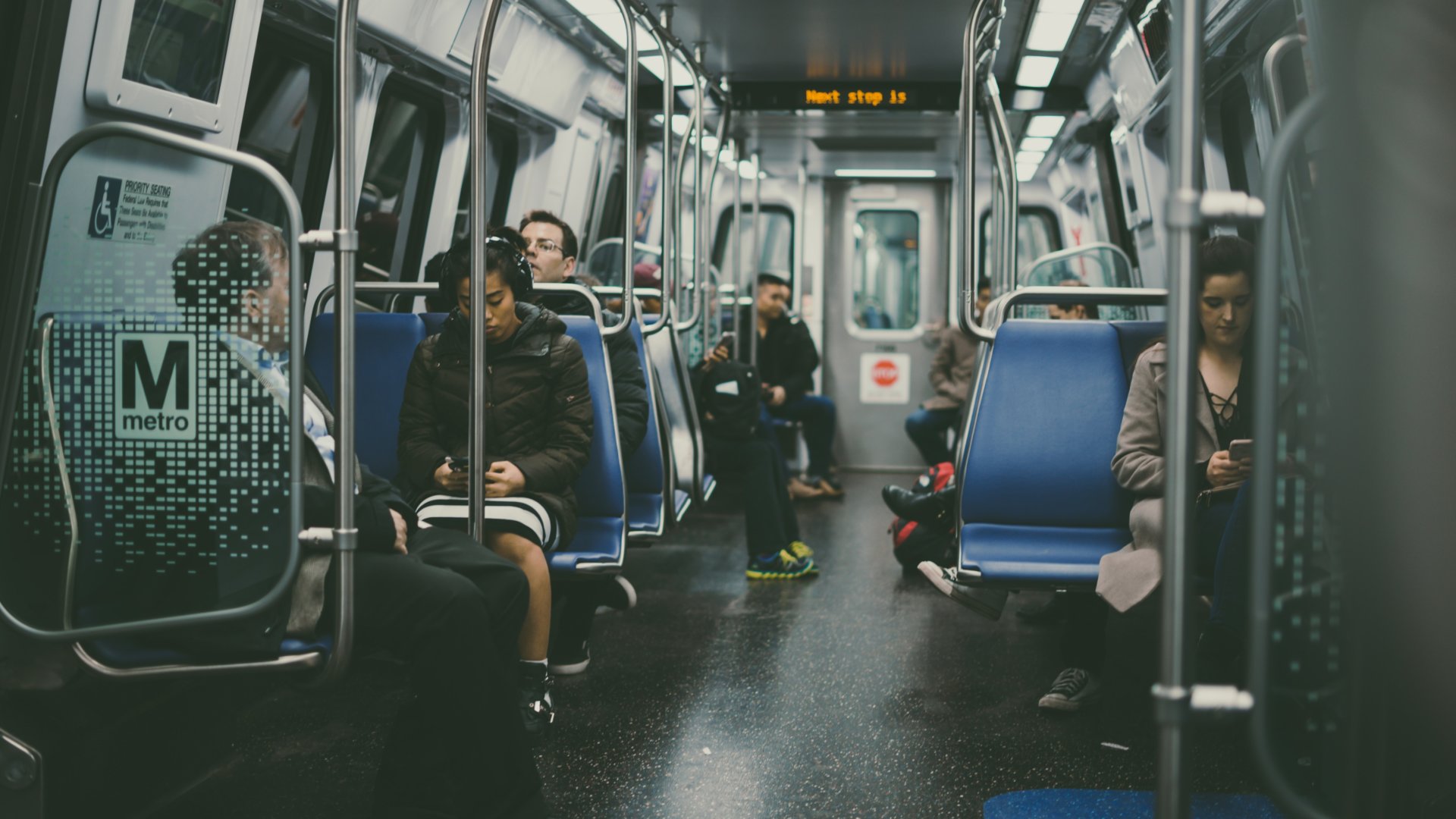
5 solutions regarding public transport information for deaf and hard of hearing users
- The SMS alert
- The light beep
- Information screens
- Training of agents in sign language
- Traveler information applications
“Due to an accident on the track, the metro will be stopped for a few moments, thank you for your understanding”, “Line 21 is diverted due to road work, exceptionally the bus will not stop at the next three stations”.
All these audio messages familiar to our ears and broadcast in our stations and in our public transports are essential to ensure comfort and safety of travelers especially in case of emergency or disruption. But public transport information must be accessible to all types of audiences for whom it is intended. The audio format, if it has the advantage of being direct, excludes all users with a hearing loss, ie 466 million people worldwide (source: who.int).
So how to ensure quality information for hearing impaired users when using transportation? Let’s focus on regulations, needs and existing solutions for deaf and hard of hearing public transport users.
Regulation and accessibility of passenger information
In the United States equal access to information of transportation is ensured with the Americans with Disability Act. Under Title II, agencies which operate at a local or state level are required to provide equal access to all services offered by the organization including public transportation. A public entity must ensure that its communications with deaf citizens are as effective as communications with others.
In Canada, The Guide to Accessibility for Intercity Bus Services states that “Public announcements should be provided in both audio and visual formats, if possible, in all passenger service areas inside terminals.
In the United States and in accordance with the ADA, the National Association of Deaf (NAD) continues to advocate that all transportation systems (airline, train, bus, subway, etc.) make all audible information accessible by providing the same information in a visual format.
Different laws, for different services exists in different countries. The transportation network managers are responsible for their application at local and state level.
Understand the difficulties and needs of deaf people in public transport
In this regulatory context, where the rights of the disabled public are addressed, people who are deaf or hard of hearing still face accessibility problems, particularly when broadcasting audio messages in the event of an emergency or disruption.
This is compounded by other challenges such as trip planning, ticket purchase, orientation and interaction with travelers and staff.
If the deaf population is very heterogeneous, the perception of the surrounding world remains similar from one person to another. From the reduction to the renunciation of any form of mobility, we find mainly the following inconveniences:
- difficulties in perceiving sound information
- annoyance due to noise in degraded sound environments
- loss of balance, fatigue, headaches, tinnitus etc.
When traveling, people with hearing loss need written support that is broadcast simultaneously with the spoken message, to ensure the same level of information and therefore security and service as the rest of the population. Also, to ensure their comfort, priority seating and a quiet environment should be provided wherever possible.
5 solutions to compensate for audio information in transport
The written format remains the most popular format for people who are deaf or hard of hearing, although it does not take into account the needs of people with reading difficulties due to a disability or a lack of knowledge of the language.
A study conducted by UNIVACCESS in 2018 identified universal solutions for public transport for people with disabilities, particularly for people who are deaf or hard of hearing. Here are the 5 most frequently identified solutions.
#1. SMS alert
Among the solutions listed are universal solutions such as the SMS alert in case of disruption. This initiative, set up in cities such as Grenoble, Auckland, Geneva and King County, among others, allows users to follow the status of their mode of transport in real time or to receive specific notifications to a route, especially during disruptions.
#2. The light beep
Many cities around the world like Lisbon, Lyon or Singapore have equipped their metro and tramway doors with a flashing light inside and outside. The light accompanies the beep to prevent any crossing of the doors when they close.
#3. Information screens
Information screens are sprouting around the world, like in Manchester or Barcelona. Located on platforms, stations and inside vehicles and wagons, they provide users with useful and reliable written information. Most screens on board inform on the next stop. Some go as far as announcing the places of interest and the shops nearby.
#4. Training of agents in sign language
Some cities like Toulouse have introduce their agents to sign language. Although it is only practiced by a handful of deaf people in the world, its use in stations is a real asset for the users concerned.
#5. Traveler information applications
Different transportation operators thought the world have developed their proper mobile application warning of possible delays, train changes, platform numbers and even on board announcements.
The City of Barcelona for example provides users with an application calculating in real time the number of minutes remaining before the arrival of the next bus. The city of London offers a similar service thanks to a route calculator with simple and adapted choices.
MaaS: an all-in-one tool for tomorrow’s accessibility
What is MaaS? This article tells you everything you need to know!
MaaS-type applications such as Moovit and CityMapper will soon offer an all-in-one solution to promote the mobility of all public and private transport users. From travel planning, to ticket purchase, guidance assistance and real-time information dissemination, MaaS is emerging as the ideal innovation for people with hearing loss.
In conclusion
The dissemination of the right information at the right time is an asset for transport services. For people who do not hear or hear little, lighting, human and technological solutions (screens, SMS and mobile applications) have been tried and tested in many cities around the world. Knowing that after 50 years, one in three has hearing difficulties, compensating for audio information remains a major challenge for transport operators.
All these amenities are universal solutions that can serve the greatest number, disabled or not. Investing in the accessibility of deaf and hard of hearing people, is indeed a guarantee to the access of your network to the greatest number.
You want to make your public transports accessible to disabled people? Check out our article: Making Public Transport Information Accessible to Disabled People
media

When traveling, people with hearing loss need written support that is broadcast simultaneously with the spoken message, to ensure the same level of information and therefore security and service as the rest of the population.
writer

Zoe Gervais
Content Manager
stay updated
Get the latest news about accessibility and the Smart City.
other articles for you

Open Data Is Key to Fostering Universal Accessibility
Open data represents an opportunity for cities to reach universal accessibility. It shows the missing links of the mobility chain.
Our Audio Beacons Guide the Blind and Visually Impaired at the Helsinki Subway
The Helsinky subway improved their audio signage system by installing on demand and remotely activated audio beacons.
7 Good Reasons to Install Audio Beacons at Your Public Transport Network
Audio beacons are an efficient way to provide more autonomy to blind and visually impaired people. They can easily use public transport.

Will Remote Activation Become the Norm for Accessible Pedestrian Signals?
More and more cities like New York have been exploring remote activation to trigger accessible pedestrian signals.
share our article!
more articles

Disability Statistics in the US: Looking Beyond Figures for an Accessible and Inclusive Society
Disability Statistics in the US: Looking Beyond Figures for an Accessible and Inclusive Society Around 61 million adults in the United States live with a disability. Diving into disability statistics in the US will help us know exactly who is concerned and what...
Our Audio Beacons Guide the Blind and Visually Impaired at the Helsinki Subway
Our Audio Beacons Guide the Blind and Visually Impaired at the Helsinki SubwayOur audio beacons equip the new line of the Helsinki subway in Finland. They help blind and visually impaired people locate the points of interest of a station. For users with visual...

Will Remote Activation Become the Norm for Accessible Pedestrian Signals?
Will Remote Activation Become the Norm for Accessible Pedestrian Signals?Without pushbutton, there are no accessible pedestrian signals. That’s how APS work in the U.S. But more and more cities have been exploring remote activation like New York City. The Department...

Hearing Impaired People: a Multitude of Profiles for Different Needs
Hearing Impaired People: a Multitude of Profiles for Different Needs Did you know that hearing impaired people have several profiles and that the way they identify themselves is important? You may be familiar with deaf and hard of hearing people but for each of...
NEVER miss the latest news about the Smart City.
Sign up now for our newsletter.
Unsubscribe in one click. The information collected is confidential and kept safe.
powered by okeenea
The French leading company
on the accessibility market.
For more than 25 years, we have been developing architectural access solutions for buildings and streets. Everyday, we rethink today’s cities to transform them in smart cities accessible to everyone.
By creating solutions ever more tailored to the needs of people with disabilities, we push the limits, constantly improve the urban life and make the cities more enjoyable for the growing majority.


